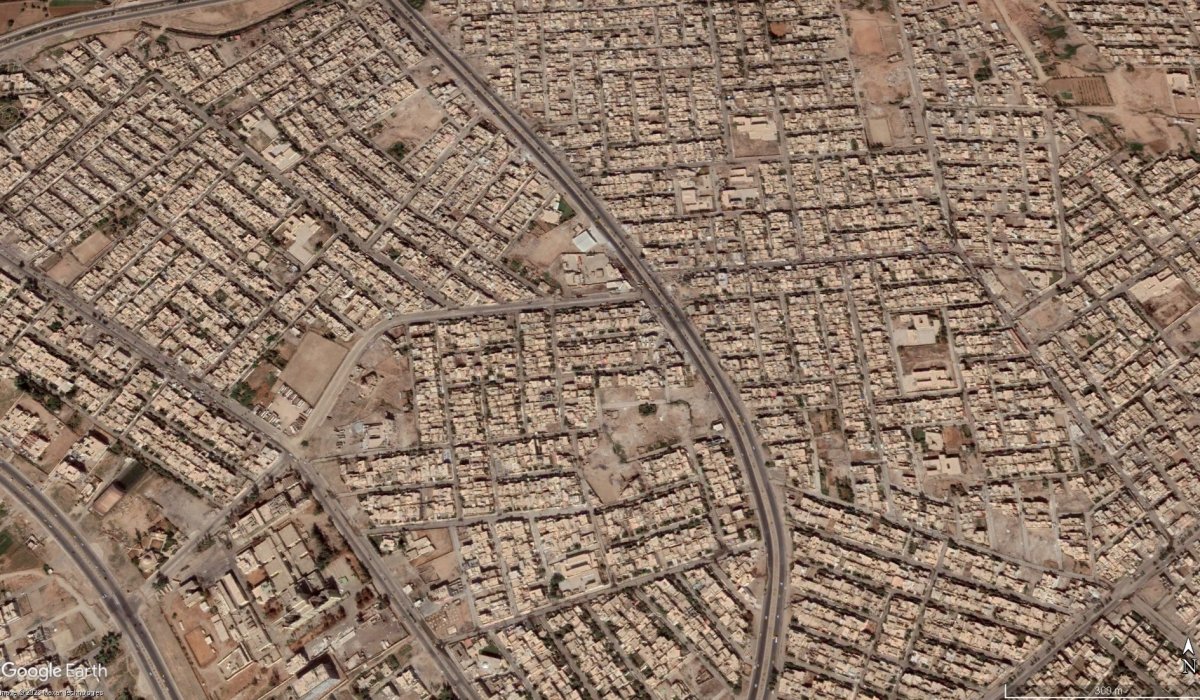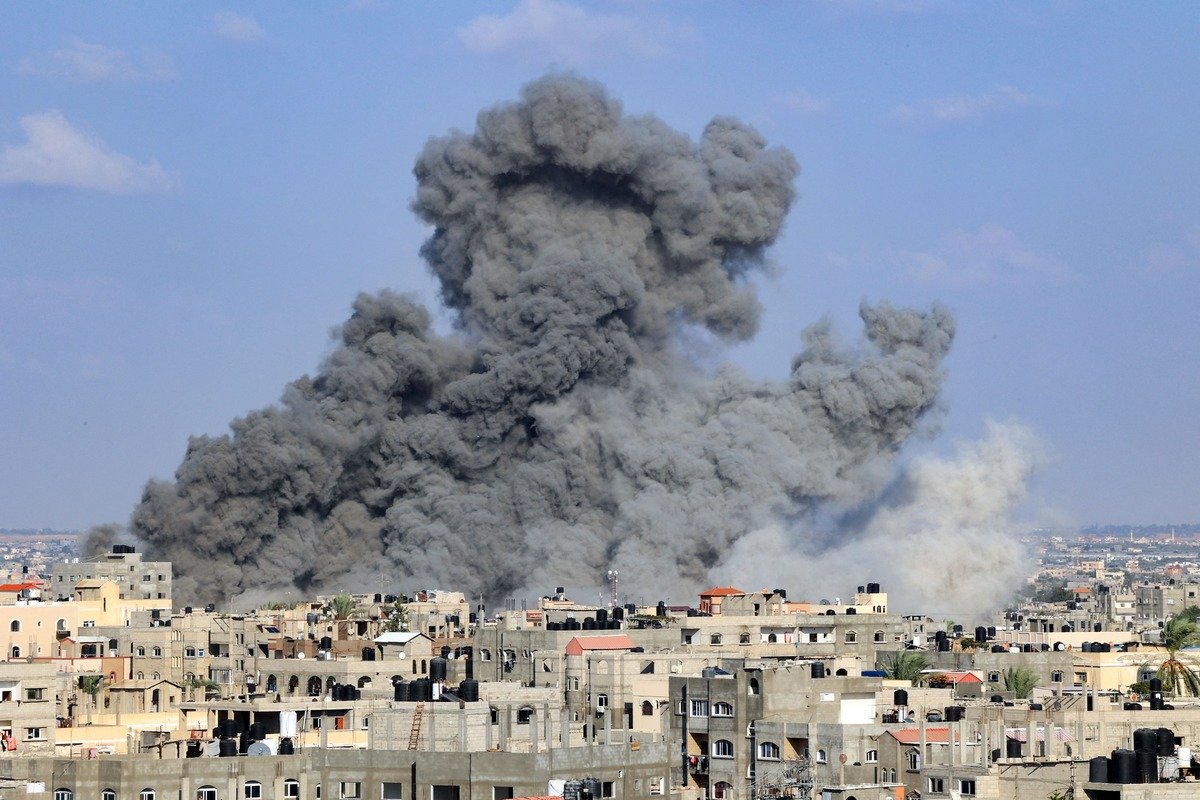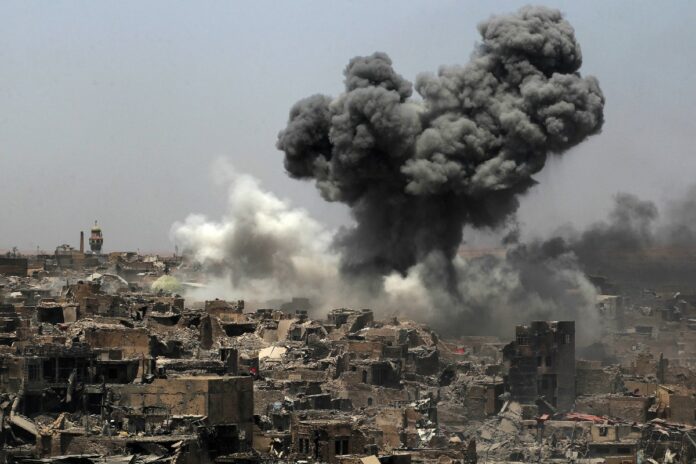Satellite imagery of the devastated Iraqi city of Mosul could be a sign of the future awaiting the Gaza Strip, as Israel expands its ground operations almost a month after the outbreak of violence in the region.
Images of the northern Iraqi city show it just before the Islamic State group took control of it in 2014, and then in the wake of the battle that followed between Iraqi government and U.S.-led coalition forces and Islamist fighters between 2016 and 2017.
The 9-month battle laid waste to the historic city and the clearance of IS fighters by the government and international forces was paid for dearly by the city and its inhabitants.
Israel has been on a war footing for weeks now and has vowed to wipe out Hamas following the coordinated attacks on Israel on October 7, which were the deadliest assault on the country in its history.
The Israeli Prime Minister, Benjamin Netanyahu, said the country’s military has a “clear goal of destroying Hamas’ military and governing capabilities.”
“We are doing this systematically,” he said on Monday, describing the various stages of Israeli Defense Forces (IDF) operations to destroy Hamas. After the initial blockade of Gaza and the second phase of operations — “pounding them from the air”— Israel is expanding its operations on the ground in the territory, he said.
Google Earth Pro, Maxar technologies
No two battles are identical, but there are some “quite close parallels,” said Anthony King, professor of defense and security studies and head of the Strategy and Security Institute at the University of Exeter in the U.K.
The problems the IDF now faces are “not dissimilar” to what the Iraqi military and the U.S.-led forces were confronted with during their Operation Inherent Resolve, he told Newsweek.
“The only option for the military was to seal off the city, and clear the city, essentially block by block, until they’d actually cleared out the entire structure of ISIS,” he said. “If you compare that to Gaza in 2023, in a military sense, it’s quite a similar problem.”

Google Earth Pro, Maxar technologies
Much like when Iraqi and coalition forces in 2016 and 2017 could not eliminate ISIS in Mosul, which it seized in 2014, with airstrikes alone, Israel’s bombing campaign can only go so far, King said. “The forces need to infiltrate into the city and clear out the fighters who are fortified into those positions,” he said. Militarily, “there are evident parallels,” he added.
“It is doing so in measured, very powerful, steps making methodical, step-by-step progress,” he added.
In the weeks since October 7, Israel has carried out a relentless campaign of airstrikes on the Hamas-controlled Gaza Strip, warning civilians in the northern Gaza City to work their way south in advance of ground operations.
Israel has struck more than 12,000 sites in Gaza in the just over three weeks since the Hamas attacks, the Israeli air force said on Thursday.
Air assaults were a huge part of the battle for Mosul. From October 2016 to October 2017, U.S.-led international coalition forces dropped more than 46,000 air-released weapons on Iraq and Syria, according to TIME.
ISIS fighters in Mosul hadn’t controlled the city for as long as Hamas has been in charge in Gaza, said Raphael Cohen, a senior political scientist with the RAND Corporation think tank. There is a lot more military infrastructure for Israel to break through in Gaza, he told Newsweek. The number of airstrikes are relative to the number of targets, he said.
Yet there are other similarities. The battle for Mosul came at an eyewatering human cost — at least 9,000 civilians were killed in the fighting for the city, according to estimates from evidence submitted to the British government and The Associated Press.

SAID KHATIB/AFP via Getty Images
“It was the biggest assault on a city in a couple of generations,” Chris Woods, head of U.K. nonprofit monitoring organization, Airwars, told AP in December 2017.
The death toll in the Gaza Strip in the weeks of warfare surpassed 9,000 on Wednesday, according to Hamas-run health authorities in the territory, although they did not specify any further details. The death toll in Israel is thought to be more than than 1,400.
Israel has faced criticism for the civilian casualties coming from its airstrikes on the densely populated piece of land, and Hamas has said a number of hostages taken from Israel into the territory were killed in Israeli strikes.

AHMAD AL-RUBAYE/AFP via Getty Images
Israel has repeatedly warned civilians in northern Gaza to move south in the face of airstrikes and ground operations, which many have done. However, Hamas has told residents to stay put.
Both Hamas and Israel have denied intentionally targeting civilians, which is a war crime.
Broadly speaking, Gaza’s roughly 2.3 million residents at the start of this month is not too far off Mosul’s population when ISIS seized power in 2014.
In Mosul, ISIS fighters “definitely weaponized the civilian population,” King said. “It wasn’t as one mass hostage taking—as Hamas have done to the Israelis—but the civilian population was taken hostage and weaponized by ISIS.”
During the battle for Mosul, humanitarian groups had deep concerns over how the urban warfare playing out in Iraq’s second-largest city affected civilians. Islamic State fighters were using civilians “as human shields,” Amnesty International said in 2016.
For all the similarities, there are distinct differences. A largely more ancient and slightly less densely populated city, fighting in Mosul involved many trenches and interconnecting buildings, but far less of a focus on the vast network of tunnels Hamas built under Gaza, King said.
Estimates also put the number of ISIS fighters in Mosul at somewhere between 3 and 12 thousand. The likely figure is around the 6,000 mark, with another 10,000 auxiliaries, King said. The forces battling ISIS in Mosul were not far off the 100,000 point, and were supported by air superiority and the U.S., he added.
Hamas, however, reportedly has up to 40,000 fighters amassed in the Gaza Strip—a “plausible” figure, King said. According to the International Institute for Strategic Studies, the IDF has 169,000 active military personnel and up to 465,000 reservists.
It is one reason that the fate of Gaza may not be the same as Mosul. While Iraqi and coalition forces spent nine months clearing the entire city, Israeli forces are unlikely to carry out a full sweep of Gaza or operate in the strip for that amount of time, King said.
The IDF may focus on Gaza City and the northern section, but will likely have to withdraw without the same, complete wiping out of Hamas fighters from the territory that the Iraqi and coalition forces achieved in 2017.
It is not clear what happens next with Gaza, agreed Cohen. “I don’t see how you fully root out Hamas,” he said, adding that it was always assumed Mosul would return to Iraqi government control after the battle. The same assumptions do not exist for Gaza.
Newsweek has reached out to the IDF for comment via email.
Uncommon Knowledge
Newsweek is committed to challenging conventional wisdom and finding connections in the search for common ground.
Newsweek is committed to challenging conventional wisdom and finding connections in the search for common ground.


